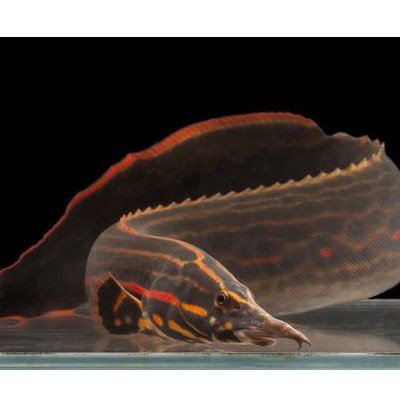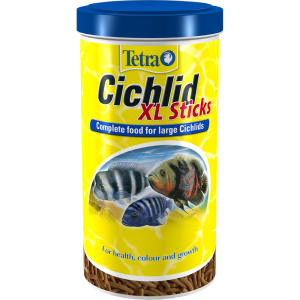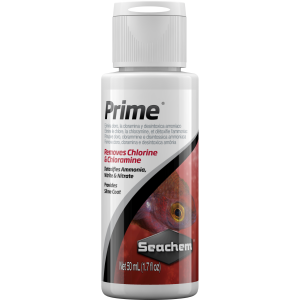Fire Eel – 18cm
R555.00
Before ordering live fish, please click to check if we can safely ship livestock to your location.
Please note that fish image is a representation of what the fish might look like as an adult.
The Fire Eel is not a true eel, but a freshwater fish that is called an eel due to its appearance. They are one of the largest spiny eels in the aquarium hobby and you will need a large tank! Adult size up to 61 cm length, min tank size 350 litres.
Fire Eels (Mastacembelus erythrotaenia), are freshwater fish native to the river beds of Southeast Asia. Although it is not a true eel, it shares the snake-ish appearance of eels and is one of the larger aquarium inhabitants.
One important thing to recognize about Fire Eels is that there is quite a difference between Fire Eels that live in the wild and those that live in home aquariums. You can expect the Fire Eel in your home tank to grow to about 61 cm and live for about 10 years with proper care. In their natural habitat, however, Fire Eels grow to about 1 meter and live twice as long – about 20 years!
Behaviour
Handle Fire Eels with care since their sharp spines emit a toxic slime that can be painful. They are true diggers and burrowers, and in their natural habitat enjoy the slow currents of lakes and rivers, where they happily nest in the mud.
Fire Eels are nocturnal creatures and prefer to hide during the day, so they will appreciate lots of hiding places–aquarists should note that the regular decorations, rocks, and small aquatic plants will not suffice for these largeeels. You will need large pieces of driftwood, larger rocks, or maybe some PVC pipe to give these guys appropriate hiding space. It is also a good idea to keep the lighting dim. Go easy on rooted aquatic plants like Dwarf Sagittaria, or they will uproot it all and destroy your substrate. Stick to floating aquatic plants.
The feeding behavior of Fire Eels is peculiar: it has a growth on the end of its nose that it uses to canvas the bottom of the tank for food. At the end of the growth on his nose, there are two nostril tubes. It’s truly an unforgettable look.
If you happen to be enjoying a view of your tank during the day and see a long nose and huge eyes sticking out of the substrate, that’s just your Fire Eel doing some daytime burrowing.
Tank Conditions
For optimal quality of life, it is best to recreate the conditions that Fire Eels have in the wild. Even if they are bred in captivity, they still have the internal wiring for the same kind of environment. In their natural habitat in Southeast Asia, they burrow in the mud, so endeavor to create a muddy area.
The substrate should be thick since they like to dig–aim for 5 cm of fine sand. Make sure it is fine so that it does not damage or scratch this bottom dweller.
Plentiful hiding places are a must for Fire Eels, and you should avoid rooted plants, opting instead for floating plants that they can not dig up. Because they are nocturnal, lighting should be dim, so the floating plants will help filter out bright light.
In addition to large driftwood and rocks, you could turn a flower pot on its side; your Fire Eel will happily seek refuge inside.
You also want to make sure that your tank has a tight-fitting lid since the Fire Eel is a bit of a Houdini and might very well escape if the lid is loose or absent.
Fire Eels need constant water flow that is well oxygenated. To ensure optimal conditions for your Fire Eel, perform regular water changes, and make sure you have a strong filter because Fire Eels like water that is very clean.
Compatibility
Although the Fire Eel is a peaceful fish, it is still a predatory creature. Fire Eels will not bother larger fish in the tank but will eat fish that are smaller than they are.
Suitable tank mates for Fire Eels
- Angel Fish
- Barbs (medium to large)
- Green Terror Cichlid
- Oscar Fish
Fire Eels are quite aggressive and should not be kept in a tank together. Putting them together will endanger the Fire Eels and create a stressful aquarium environment that will be detrimental to all the aquarium inhabitants.
Feeding
In their natural habitat in Southeast Asian rivers, Fire Eels prey on small crabs, insect larvae, snails, and worms. In a home aquarium, Fire Eels recognize their owners and will accept food from their hands. This is a significantly more satisfying experience than dropping pinches of flakes into a tank. You can feed Fire Eels live food, such as bloodworms, small fish, and tubifex; they will also be happy with dry and frozen food.
Although Fire Eels are omnivores, they go after meaty sources of protein first so try fish food for carnivores.
Younger Fire Eels do well with invertebrates such as bloodworms and brine shrimp. Adult Fire Eels can handle larger food like earthworms, fish, mussels, and live shrimp.
Care
Fire Eels need constant water flow that is well oxygenated. To ensure optimal conditions for your Fire Eel, perform regular water changes, and make sure you have a strong filter because Fire Eels like water that is very clean.
The best care for Fire Eels is not too different than caring for other aquarium fish. Make sure to keep their tank clean by performing regular water changes and using a quality filter. Do regular tests to make certain that the water parameters are at the recommended levels so that your Fire Eel can thrive.
Other things that will lead to a stress-free life for your Fire Eel include:
- Keeping them away from other Fire Eels. Although these fish are pretty docile, they get super aggressive around their own kind.
- Give them plenty of places to hide. They come out of hiding at night but need places of refuge during the day.
- Provide sufficient nutrition: big fish need lots of food. They also crave that connection with their owner and like to be hand-fed.
- Make sure they have space to dig and burrow. Ensuring at least 2 inches of fine sand will give them sufficient space to dig in the sand.
- Muddy the waters. Well, the water itself needs to be clean, but Fire Eels hang out in the mud when they are in their natural habitat. If you can recreate some mud-like conditions in your tank, Fire Eels will be content.
See Fish Disease Diagnosis and Treatment at Rebel Pets for help with diagnosing and treating diseases.
| Category | Rating |
|---|---|
| Adult Size: | up to 61 cm |
| Aquarist Experience Level: | Advanced due to size |
| Minimum Tank Size: | 350 litres |
| Temperament: | Peaceful but predatory |
| Tank Level: | Mid dweller |
| Diet: | Omnivore, bottom feeder |
| Aquarium Hardiness: | Hardy |
| Lifespan: | 5 Years |
| Water Flow: | Strong |
| Temperature: | 24 to 28°C |
| pH: | 6.0 – 7.5 slightly acidic |
| Hardness: | 6 – 12 dGH (soft) |
Shipping Countries: South Africa
Shipping States: Gauteng (South Africa)
Specification: Fire Eel – 18cm
| Weight | 0.5 kg |
|---|
Product Enquiry

R555.00


















